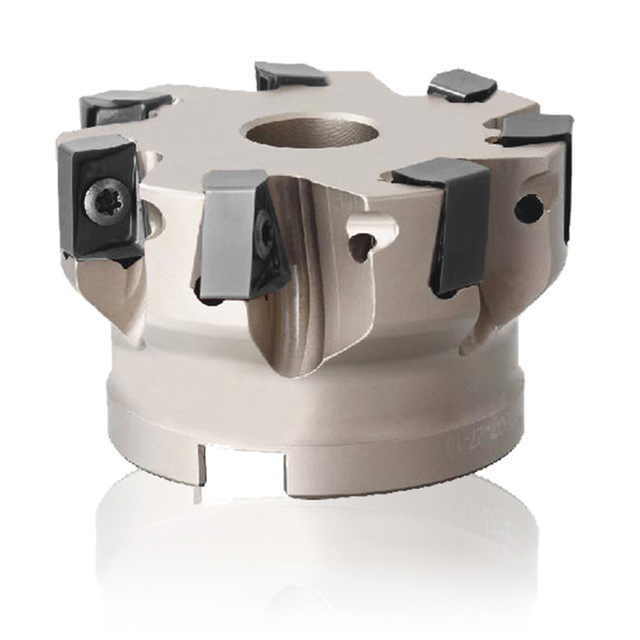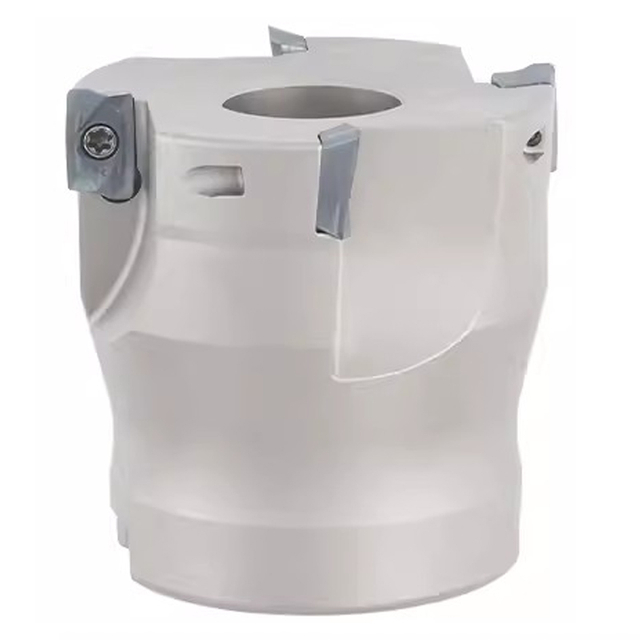 English
EnglishCALL US
+86-19518052336
- All
- Product Name
- Product Keyword
- Product Model
- Product Summary
- Product Description
- Multi Field Search
 English
EnglishViews: 188 Author: Site Editor Publish Time: 2025-05-31 Origin: Site

In the world of CNC machining and metal cutting, choosing the right tool is essential for achieving precision, surface quality, and overall efficiency. Two of the most commonly used tools are the end mill cutter and the face milling cutter. While they may appear similar to an untrained eye, they serve fundamentally different purposes in the manufacturing process.
Face milling cutters are specialized cutting tools used primarily for cutting large flat surfaces on a workpiece. These cutters are mounted on a spindle and cut with the outside edges of their inserts, rather than with the tip like end mills. A typical face milling cutter contains multiple replaceable inserts arranged around its circumference. As the cutter rotates, these inserts shear the material off the surface of the workpiece.
Unlike traditional slotting or drilling tools, face milling cutters are engineered for high material removal rates, making them ideal for operations requiring surface finishing or leveling of large workpieces. They are commonly used in vertical milling machines and horizontal machining centers.
Multiple inserts provide high productivity
Large diameter allows for wide surface coverage
Face cutting direction ensures smooth and flat finishes
Adjustable inserts enable cost-efficient maintenance
Face milling is ideal for machining cast iron, steel, aluminum, and other metals where surface flatness is crucial. Operators often rely on face milling when creating parts that require high tolerances and aesthetic surface finishes.

The end mill cutter, by contrast, is more versatile and is primarily used for profile milling, slotting, plunging, and contouring. It is a solid tool made from high-speed steel, carbide, or cobalt, with cutting flutes running along its body and a sharp tip for axial cutting.
Unlike the face milling cutter, end mills can cut in all directions—axially, radially, and laterally. This flexibility makes end mills the go-to tool for detailed, three-dimensional work and intricate machining operations. They come in various geometries, such as square end, ball nose, and corner radius, each designed for a specific application.
Solid construction for durability and precision
Various flute configurations for different cutting conditions
Multi-directional cutting for complex geometries
Ideal for deep cavities and slots
Because of their design, end mills are more suitable for smaller features and intricate paths rather than large-scale surface operations.
Here is a side-by-side comparison to clearly illustrate the distinctions between face milling cutters and end mill cutters:
| Feature | Face Milling Cutter | End Mill Cutter |
|---|---|---|
| Cutting Direction | Primarily radial (face cutting) | Axial, radial, and lateral |
| Tool Design | Cutter body + replaceable inserts | Solid body (carbide/HSS) |
| Application | Surface finishing, flattening | Slotting, contouring, profiling |
| Tool Movement | Horizontal pass over surface | Can move in X, Y, Z directions |
| Surface Finish | Excellent flat finish | Good for detailed finish |
| Ideal Material Removal | Large flat areas | Detailed or small cavities |
| Cost of Replacement | Lower due to insert change | Higher (entire tool replacement) |

Choosing the right tool is not just about the design, but also the machining context. Face milling cutters are best suited for situations where:
You need to remove large amounts of material quickly
The workpiece requires a flat and even surface
You're working with wide, accessible surfaces
High-speed, high-efficiency production is the goal
You want to minimize tool wear costs by replacing inserts rather than the whole tool
In such scenarios, face milling provides superior performance over end milling. It reduces machining time, improves surface quality, and increases tool life, especially when combined with modern insert technology.
End mill cutters are ideal when the job involves:
Slotting and grooving in the workpiece
Creating 3D contours and profiles
Plunging or drilling operations
Working in tight or restricted areas
Machining internal features that require precision
Their versatility makes them a staple in toolrooms, mold shops, and custom part manufacturing. Even though they don’t offer the same wide coverage as face mills, their ability to handle complex geometries and confined spaces makes them indispensable in CNC programming.
Answer: Technically, yes—but it is not efficient. End mills can perform limited face milling, especially on smaller surfaces. However, they lack the stability, diameter, and insert configuration that make face milling cutters efficient and productive for large surface area removal.
Answer: Face mills use multiple inserts arranged radially, which allows them to remove more material in a single pass. The wide diameter and radial cutting action distribute the cutting force, reduce vibration, and improve finish quality.
Answer: While the initial cost of a face mill cutter body may be higher, the replaceable insert system makes long-term usage more economical. End mills, being solid, require complete replacement once worn or broken.
Answer: Yes, for intricate features. End mills are designed for detailed work, tight tolerances, and confined spaces where face mills cannot reach. However, for flatness and large area consistency, face mills outperform.
To sum it up, the face milling cutter and the end mill cutter are both essential tools in modern machining, but they serve very distinct purposes. Face milling is unmatched in flat surface finishing and productivity, while end milling excels in versatility and precision. Choosing the right cutter depends on your application requirements—material type, geometry complexity, surface finish, and productivity goals.
For operations requiring large-scale surface machining with optimal efficiency, face milling cutters are the clear choice. Meanwhile, end mill cutters shine in complex, detail-oriented machining tasks. Understanding these distinctions will lead to better outcomes in your manufacturing process and enhance tool performance and longevity.
+86-19518052336
333 Liantang Road, Cidong Binhai Development Zone, Longshan Town, Cixi, Ningbo City, Zhejiang Province, China